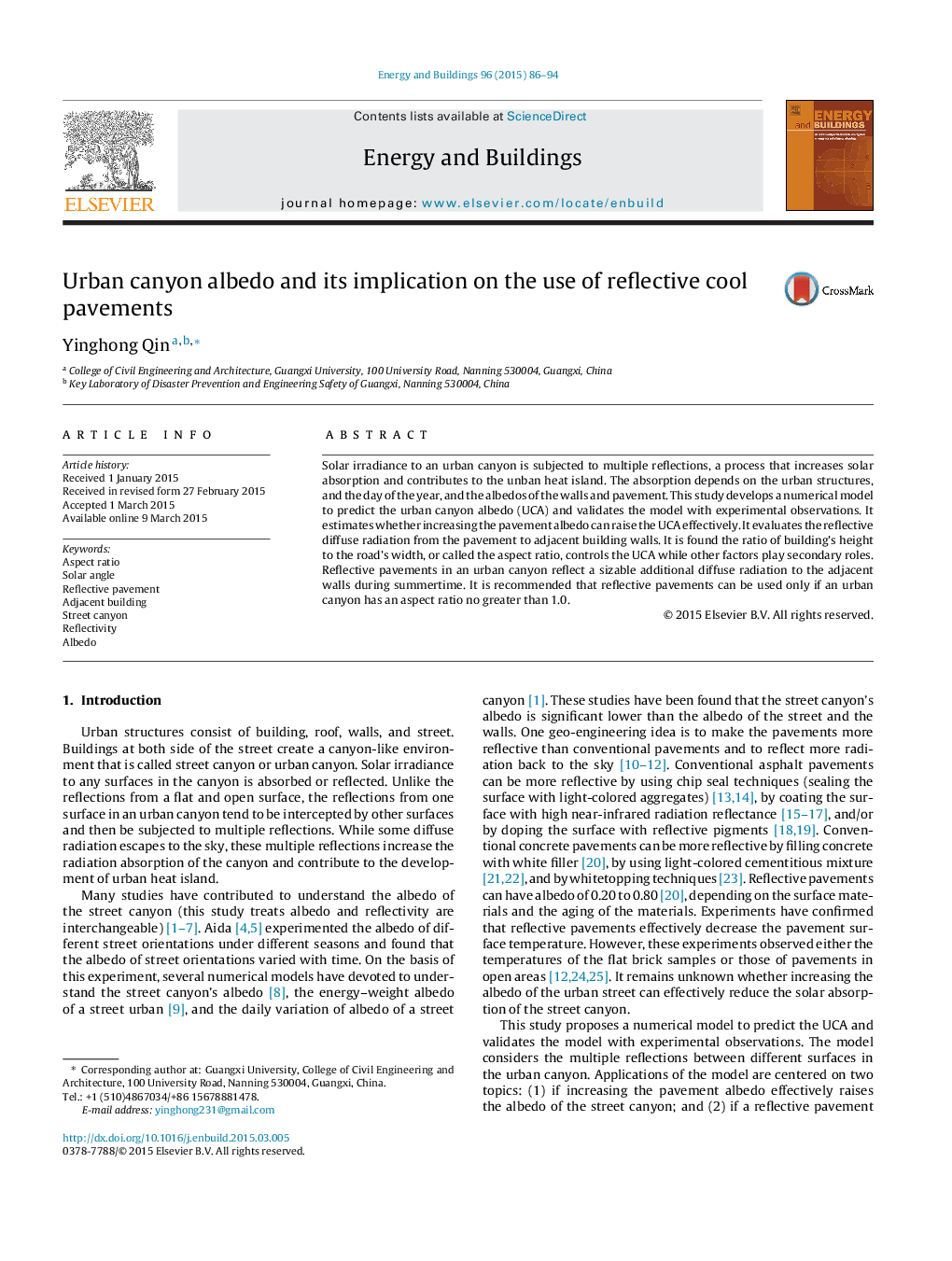| Article ID | Journal | Published Year | Pages | File Type |
|---|---|---|---|---|
| 6731436 | Energy and Buildings | 2015 | 9 Pages |
Abstract
Solar irradiance to an urban canyon is subjected to multiple reflections, a process that increases solar absorption and contributes to the unban heat island. The absorption depends on the urban structures, and the day of the year, and the albedos of the walls and pavement. This study develops a numerical model to predict the urban canyon albedo (UCA) and validates the model with experimental observations. It estimates whether increasing the pavement albedo can raise the UCA effectively. It evaluates the reflective diffuse radiation from the pavement to adjacent building walls. It is found the ratio of building's height to the road's width, or called the aspect ratio, controls the UCA while other factors play secondary roles. Reflective pavements in an urban canyon reflect a sizable additional diffuse radiation to the adjacent walls during summertime. It is recommended that reflective pavements can be used only if an urban canyon has an aspect ratio no greater than 1.0.
Related Topics
Physical Sciences and Engineering
Energy
Renewable Energy, Sustainability and the Environment
Authors
Yinghong Qin,
